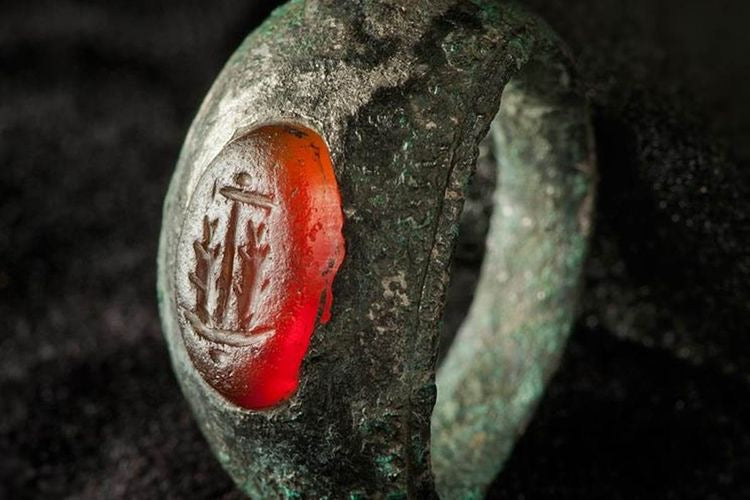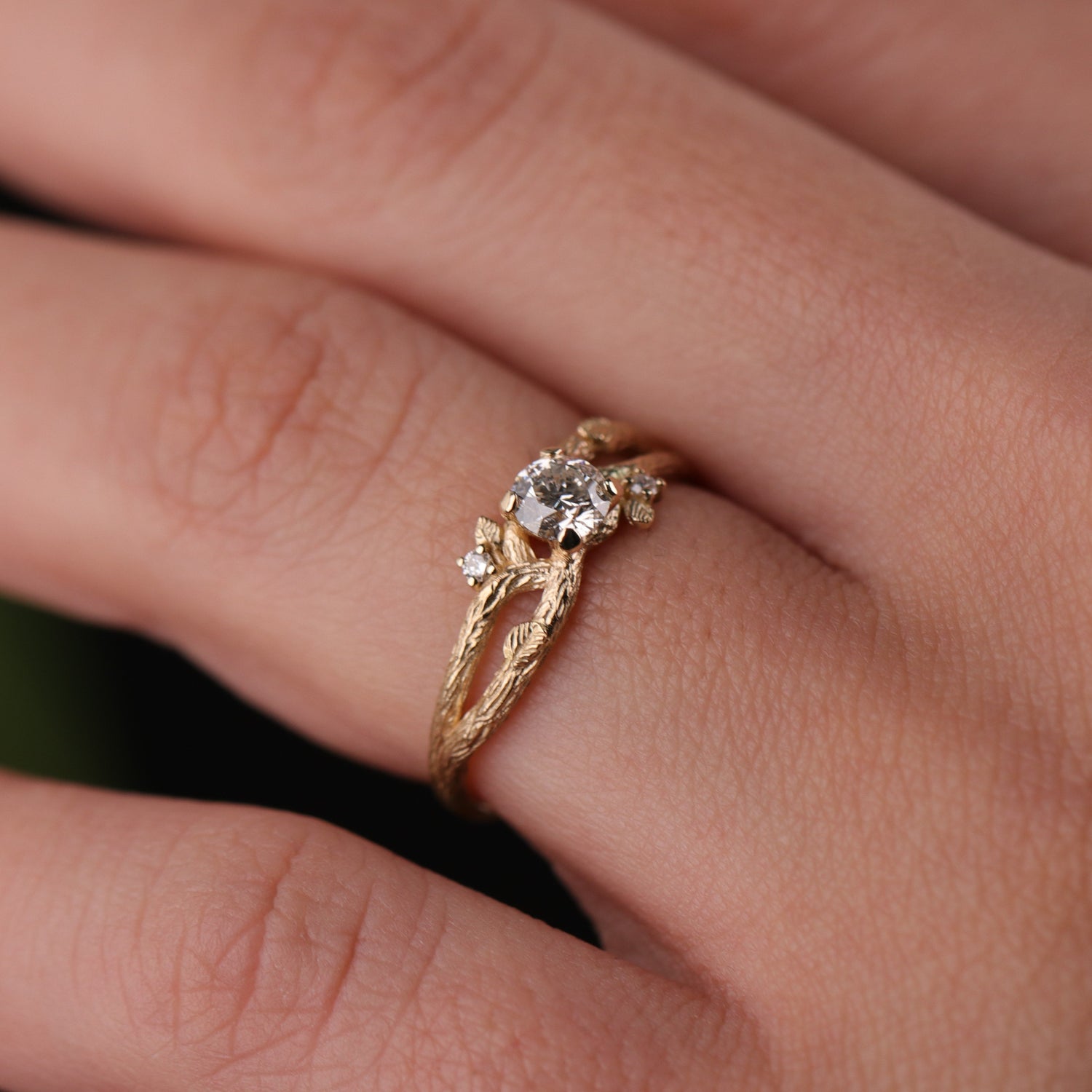
The Importance of Jewelry in Human History
Modern humans, Homo Sapiens, completed their biological evolution approximately 50 thousand years ago and spread everywhere in the world, from Africa to America, Europe and Asia. After the discovery of fire, the way humans see life as they progress towards civilization develops rapidly. Man, who planted the first seeds of art approximately 20 thousand years ago, also included jewelry in his civilization adventure.
With the end of the Ice Age, an intense cultural transition took place in Europe. Stone tool technology, which has remained essentially unchanged for almost 2 million years, begins to develop rapidly. The first steps towards art were taken in the stone tool culture called "Aurignac", with many tools made of bone, ivory and horns, as well as cave paintings and female figurines called "Venus". In the same period, bone and ivory beads for decoration purposes, probably indicating status difference, are seen for the first time.
As musical instruments began to be made, cave paintings and Venus figurines became more common. Objects carved from ivory and animal bones (such as spear throwers) and thought to be related to ceremonial purposes become increasingly important elements of social life.
According to archaeologist Richard Klein, “The behavioral pattern of modern humans and the emergence of anatomically modern humans are simultaneous.”
A new era in Upper Paleolithic art begins with the start of producing beads for necklaces or bracelets in the "Aurignac" culture. Archaeological research in Western Europe yields a lot of information and documents about the bodily ornaments and decorations of the Aurignac culture. What is interesting is that it does not have a symbolic or continuous, stable development.
Along with the concepts of religion, magic, and social behavior, the need to be adorned, to wear jewelry, and to be considered valuable suddenly emerges.
Making ivory and bone beads with stone and bone tools is not easy. A series of operations are involved, such as cutting, surface shaping, abrading, drilling and polishing.
Archaeologist Randall White states that a skilled person could make four or five bone beads, perhaps one centimeter in diameter, per day with old stone-cutting tools, that is, Paleolithic tools. “If you put so much effort into the beads, their value in your eyes will definitely increase.”
“The surface of the body has become a stage on which the game of socialization is played, and bodily decorations have become a narrative tool for this.”
It has been discovered that some jewelry made from seashells and mammoth tusks were transported hundreds of kilometers away through exchange or migration. This reveals the importance given to jewelry.
The symbolic expression of the jewelry is also identified with the hunting lifestyle and shamanistic beliefs of the Upper Paleolithic communities. A significant portion of the necklaces were made from pierced animal teeth, mostly foxes and other carnivorous animals. In magic belief, the whole is associated with a part of the whole.
The aim is to integrate the person wearing the jewelry with the strength, agility, or spiritual power of the animal to be hunted or the totem animal.
All ancient communities displaying similar behavior try to increase their beauty by creating tattoos (moko) or patterned scars on their bodies, painting and adorning themselves with jewelry. “So fashion; spiritual beliefs, magic, magic and art were born in the chipped stone (paleolithic) age.”
Abstract concepts that form the basis of culture; Language, consciousness, belief and mythology, that is, the characteristics that make humans human, have not survived from 40 thousand years ago. For this reason, abstract data such as cave paintings, sculptures, tools and jewelry have largely lost their meaning with the destruction of the environment in which they were created.
Anthropological research on hunter-gatherer Paleolithic Age communities that continue to exist in isolated corners of the earth today (such as the San Tribes living in the Kalahari Desert in Africa, the Aborigines of Australia, the Amazon Indians in the tropical forests of Central America, and the people of Papua New Guinea) It gives us many clues to understand the culture of the Paleolithic Age in terms of mythology and social behavior. Aborigines have a rich social and religious tradition, as well as developed kinship systems and mythology. The symbolism reflected in the decorations they make using trees, feathers and even blood is eye-catching.
In the tradition of body decoration of primitive societies, lies the rules of the social structure based on customs fulfilled with deep-rooted devotion. At the beginning of these rules are religious and magical beliefs. It also plays a role in determining the status of the clan or tribe within the community to which a person belongs, making various parts of the body sexually attractive, and decorating transition rituals (ceremonies such as puberty, transition to warriorhood, marriage).
Today, symbols dating back to ancient times are used in the jewelery of many peoples and ethnic groups that have preserved their traditional social structure and culture. By using special forms and patterns in jewelry, which are the identity marks of the tribe and its members, the tribal identity and therefore the protective integrity of the tribe is exhibited. Additionally, it is still a very common tradition within the tribe for single or engaged girls and married women to highlight their social status through different haircuts and jewelry.
Amulets and ornaments made from a type of mussel brought from the Mediterranean are used in an area extending from Europe to Western Europe.
Although Neolithic communities had greater domination over nature, there are many amulet-jewelry finds documenting their supernatural beliefs. For example, neolithic communities in Merim, Egypt, made small axes to be worn on necklaces, believing that they would give the user the power of a stone axe.
The Birth of Jewelery
The most important feature of the Chalcolithic Age is the increase in the use of copper in tool making. In order to meet the increasing demand due to the rarity of natural, pure copper, the technique of separating copper by smelting (liquefaction-melting) and shaping it by casting was developed in the middle of the Chalcolithic Age. This technique is followed by the reduction of lead, tin and copper in the Near East. Gold is a metal that is found in nature in pure form or in electron form alloyed with silver and is easily processed. Labor-intensive mining and metal processing were humanity's first industrial production, as well as the forerunner of jewelery that would reach its peak in the Bronze Age.
During the thousand-year phase of the Chalcolithic Age, metal smelting was followed by a series of important inventions. Horses, donkeys and, in deserts, camels are domesticated and used for transportation. Field farming begins with the invention of the plow and the double harnessing of oxen. Thus, male labor replaces female labor that shouldered hoe gardening in the Neolithic Age. As a result of women's loss of power in the socioeconomic structure, the matriarchal social structure dissolves and the patriarchal structure becomes institutionalized. In the religious structure, male gods take precedence over mother goddess cults. The ruling and priest classes, which stand out in social and political organization, begin to wear symbols and jewelry to display their status and power. The need to present valuable items to temples at the center of cities and economy opens new horizons for jewelry making.


